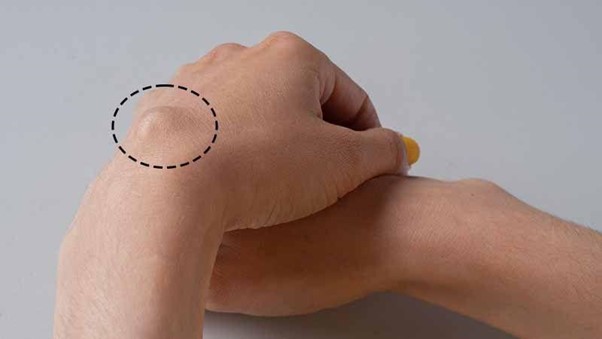
Lipoma Diagnosis, Management, and Treatment: A Comprehensive Guide
A lipoma is a slow-growing, benign lump of fat cells located under the skin. These lumps can form anywhere on the body but are most commonly found on the neck, shoulders, back, arms, and abdomen.
Lipomas are generally painless, although they may be tender or become painful if they increase in size. In some cases, a lipoma may be mistaken for a cancerous tumor and require further investigation.
In general, lipomas are diagnosed through physical examination by a doctor or health care provider. Depending upon the size of the lump and other characteristics, additional tests such as an ultrasound, CT scan, MRI scan, or biopsy may be recommended to confirm the diagnosis.
Common Signs and Symptoms of Lipomas
Soft and Moveable Lumps
One of the most common symptoms of lipomas is their texture. They are typically soft and doughy to the touch and can be easily moved beneath the skin.
Unlike other tumor types, such as fibromas or sarcomas, they do not adhere to surrounding tissues or organs. If you have found a lump and it feels soft and moveable, there’s a good chance it could be a lipoma.
Slow-Growing
Most lipomas are slow-growing, which means that they can take years to grow to a noticeable size. Generally speaking, if a lump has been present for longer than two years, it’s probably not cancerous.
If, however, you notice that it’s growing rapidly, or is accompanied by other symptoms, it’s important to seek medical attention.
Pain-Free
Lipomas don’t usually cause any pain or discomfort, even when pressure is applied. When they do cause pain, it could be a signal that there’s another underlying condition present, so be sure to consult with your doctor.
Round or Oval Shape
Lipomas are usually round or oval in shape and can vary in size from a few millimeters to several centimeters. They also generally have a well-defined border with surrounding tissues.
Occur in Specific Areas
While lipomas can develop anywhere in the body, they are most commonly found on the upper arms, shoulders, neck, chest, abdomen, and thighs. If you notice a lump in any of these areas, it’s more likely to be a lipoma than other tumor types.
Methods for Diagnosing Lipomas
The diagnosis of a lipoma is usually based on a physical examination and medical history.
During the examination, your doctor will ask questions about the lump, its size, shape, consistency, tenderness, color, and whether or not it has been present for some time. They may also examine other areas around the lump to rule out cancerous tumors or inflammation.
If further testing is needed, your doctor may recommend an imaging test such as an ultrasound, CT scan, or MRI. In addition to imaging tests, they may also order a biopsy of the lump to rule out cancerous growths.
Treatment Options for Lipomas
Most lipomas do not require treatment and can be left alone as long they are not causing any pain or discomfort. However, if the lipoma is large or growing rapidly, your doctor may recommend surgical removal.
This procedure is usually done under local anesthesia and involves cutting away the lump and several layers of skin around it. The area will then be closed with sutures to prevent infection.
Alternatives to Surgery for Treating Lipomas
In some cases, lipomas may be treated without surgery. Some alternative treatments that can be used to reduce the size of a lipoma include:
- Injections of corticosteroids or other medications directly into the lump
- Ultrasound therapy
- Cryotherapy (freezing) of the lipoma

Follow Up Care After Lipoma Excision
After a lipoma removal, it is important to follow your doctor’s instructions for proper wound care. This may include keeping the area clean and dry, applying antibiotic ointment regularly, and wearing loose clothing.
Your doctor may also recommend regular checkups to monitor the area for any changes.
Risks Associated with the Removal or Treatment of a Lipoma
Although most lipomas are harmless, there are risks associated with the removal or treatment of lipomas. These risks include:
- Infection
- Bleeding
- Scarring
- Nerve damage
- Persistent lump or scarring
In some cases, the lipoma may return after treatment. In this case, your doctor may recommend further treatments or a different approach. It is important to follow your doctor’s instructions and any post-treatment guidelines they provide.
Conclusion
Lipomas are generally harmless and may not require treatment. However, if the lipoma is large or growing rapidly, your doctor may recommend surgical removal or alternative treatments to reduce its size.
It is important to follow your doctor’s instructions for any treatment option and properly care for the area afterward to prevent infection.
If you are concerned about a lump on your body or have any other concerns, it is important to speak with your doctor. They can provide you with further information and advice on the best way to proceed.
Learn more.